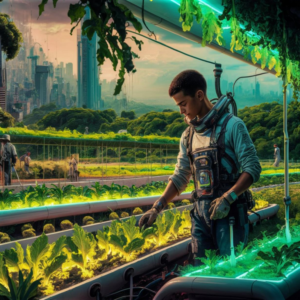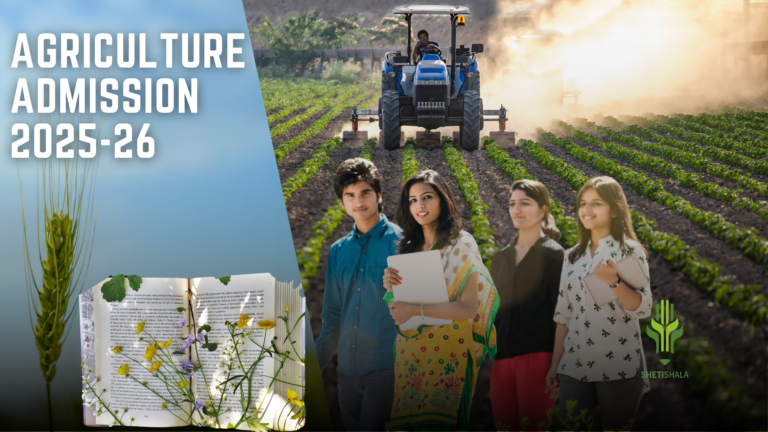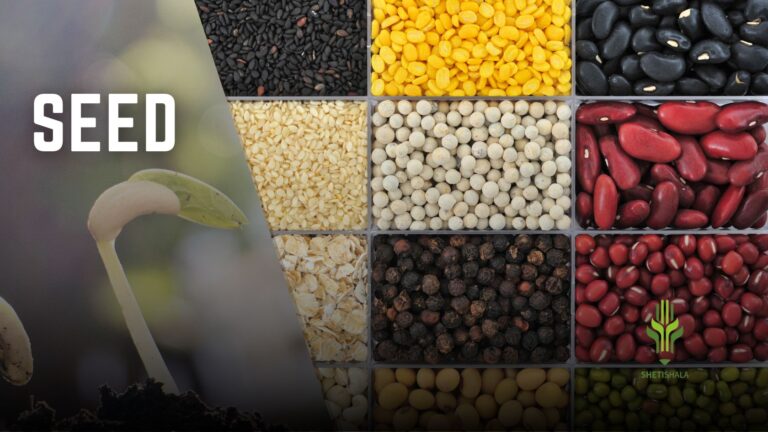Introduction
Global agriculture has been the backbone of human civilization for millennia,
providing the sustenance and resources necessary for societies to thrive.
From the earliest days of settled communities to the highly industrialized
and technologically advanced world of today, the ability to cultivate the
land and produce food has been a fundamental driver of human progress.

Population:
As the global population continues to grow, reaching over 7.9 billion people as of
2022, the importance of agriculture has only become more pronounced. The
world’s farmers and agricultural workers are responsible for meeting the demand for food, fiber, and other essential commodities, ensuring that
the human race can be adequately fed, clothed, and supported.
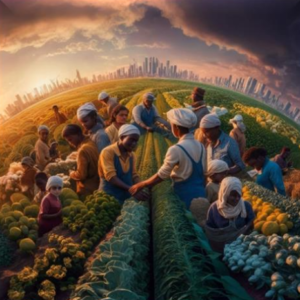
Agricultural Diversity:
The sheer scale and diversity of the global agricultural landscape are truly astounding. From the expansive wheat fields of the American Midwest to the rice paddies of Southeast Asia, from the coffee plantations of Africa to the vineyards of Europe, the agricultural sector encompasses a vast array of crops, production systems, and regional specialties.
At the heart of this global agricultural tapestry lies the incredible diversity of cultivated plants and livestock. The world’s farmers have, over centuries, carefully selected, bred, and preserved a remarkable array of crop varieties and animal breeds, each adapted to the unique climatic conditions, soil types, and cultural traditions of their local regions.
This agricultural biodiversity not only ensures a plentiful and varied food supply but also plays a crucial role in maintaining the overall health and resilience of the global food system. By cultivating a diverse range of crops and raising a variety of livestock, farmers can mitigate the risks posed by pests, diseases, and environmental stresses, while also preserving the genetic resources necessary for future adaptation and
innovation.
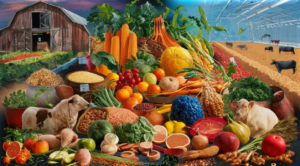
Global Agriculture:
The diversity of global agriculture is further reflected in the wide range of production systems employed around the world. From small-scale, subsistence-oriented farms to large-scale, technologically-advanced commercial operations, the agricultural sector encompasses a spectrum of scales and approaches, each adapted to the unique social, economic, and environmental conditions of their respective regions.
Agriculture in Developing Nations:
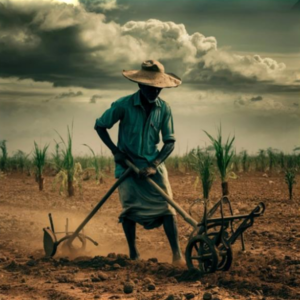
In many parts of the developing world, particularly in sub-Saharan Africa and parts of Asia, smallholder farms still dominate the agricultural landscape. These small,
family-operated holdings often rely on traditional farming practices, lowinput technologies, and diversified cropping patterns to meet the food and livelihood needs of their communities. Despite the challenges they face, such as limited access to
resources, markets, and infrastructure, smallholder farmers play a vital role in maintaining the resilience and food security of their local areas.
Agriculture in Developed Nations:
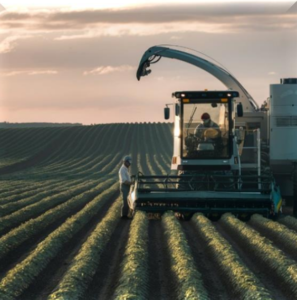
In contrast, the agricultural sectors of many developed nations, such as the United States, Canada, and parts of Europe, are characterized by large-scale, highly mechanized farms that leverage advanced technologies and sophisticated management practices to achieve high levels of productivity and efficiency. These commercial operations are often supported by government policies, agricultural research, and robust infrastructure, enabling them to meet the demands of national and global food markets.
However, the challenges facing the global agricultural sector are
immense and multifaceted. As the world grapples with the impacts of
climate change, environmental degradation, and growing resource
scarcity, the ability of farmers to sustainably produce the food, feed, and
fiber needed to support the world’s population has become increasingly
precarious.
One of the most pressing concerns is the need to increase agricultural
productivity and output to meet the growing demand for food, while also
doing so in a manner that is environmentally sustainable and socially
equitable. This requires a delicate balance of technological innovation,
resource management, and policy frameworks that can support the
diverse needs of farmers and consumers around the world.
Farming-Tech:

Precision farming technologies, such as GPS-guided tractors, drone-based crop monitoring, and advanced irrigation systems, have emerged as powerful tools in the quest for sustainable intensification of agriculture. By enabling more efficient use of inputs like water, fertilizers, and pesticides, these technologies can help to boost yields while reducing the environmental footprint of farming operations.
Similarly, the development of climate resilient crop varieties and livestock breeds, along with the promotion of agroecological practices like cover cropping, integrated pest management, and soil conservation, are crucial in helping farmers adapt to the changing climatic conditions and maintain the long-term productivity of their land.
Alongside technological solutions, the global agricultural sector has also seen a
growing emphasis on the importance of inclusive and equitable food systems.
This has led to the rise of initiatives that support smallholder farmers, empower
women and marginalized communities, and ensure fair access to resources,
markets, and decision-making processes.
Role of Global Organizations:

Organizations like the Food and Agriculture Organization (FAO) of the
United Nations, the International Fund for Agricultural Development (IFAD), and the Consultative Group on International Agricultural Research (CGIAR) have been at the forefront of these efforts, working closely with national governments, civil society groups, and the private sector to develop and implement policies and programs that address the complex challenges facing global agriculture.
Agro-Ecology:
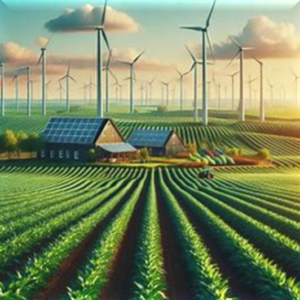
One such initiative is the promotion of agroecology, an approach to food production that combines traditional ecological knowledge with modern scientific understanding to create farming systems that are productive, resilient, and environmentally sustainable. By focusing on the interconnectedness of natural ecosystems, agroecology advocates for a holistic, place-based approach to agricultural development that respects the needs and aspirations of local communities.
Agroecological practices, such as diversified cropping patterns, the
integration of livestock, and the use of organic inputs, have been shown
to enhance soil fertility, improve water use efficiency, and promote
biodiversity conservation, all while maintaining high levels of agricultural
productivity. Moreover, these practices are often deeply rooted in the
traditional knowledge and cultural practices of indigenous and
traditional farming communities, making them particularly well-suited to
the local contexts in which they are implemented.
Agricultural Value Chain:
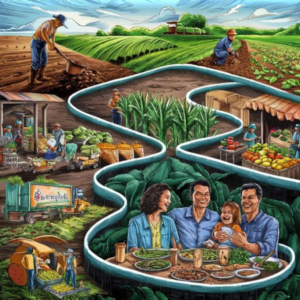
Another key area of focus is the development of inclusive and
transparent agricultural value chains, which can help to ensure that the
benefits of food production are equitably distributed among all
stakeholders, from smallholder farmers to urban consumers. This
includes initiatives like fair trade certification, community-supported
agriculture, and the establishment of local food hubs and farmers’
markets.
By shortening the distance between producers and consumers, these value chain initiatives not only provide farmers with better access to markets
and more favorable prices but also foster a deeper connection between
people and the food they consume. This, in turn, can help to build greater public awareness and appreciation for the vital role that agriculture plays in sustaining our
communities and our planet.
Role of Private Sectors:
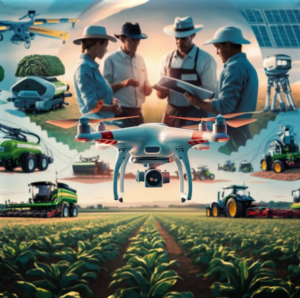
The role of the private sector in shaping the future of global agriculture
cannot be overstated. Multinational agribusinesses, food processing
companies, and agricultural technology firms have the resources,
expertise, and market influence to drive significant changes in the way
food is produced, distributed, and consumed around the world.
However, the responsibility of these private sector actors goes beyond
simply maximizing profits.
Increasingly, there is a growing expectation
that businesses operating in the agricultural space will adopt sustainable
and socially responsible practices, investing in the long-term resilience
of the food system and the well-being of the communities they serve.
This shift towards more sustainable and equitable models of agricultural
development is not without its challenges. The transition away from conventional,
input-intensive farming practices can be complex, costly, and often met with resistance from entrenched interests. Additionally, the uneven distribution of resources, knowledge, and power within the global food system can make it difficult for marginalized communities to fully participate in and benefit from these transformative changes.
Global Food Chain:
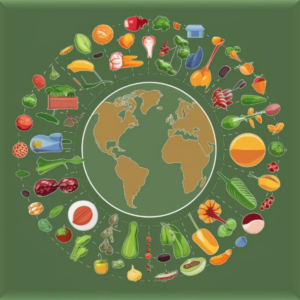
Nevertheless, the imperative to create a more sustainable and just global
food system has never been more urgent. As the world grapples with the
intersecting crises of climate change, biodiversity loss, and persistent
hunger and malnutrition, the role of agriculture in providing solutions has
become increasingly paramount. From small-scale subsistence farmers in
the Global South to large-scale commercial operations in the developed world, the
collective efforts of the world’s agricultural community will be crucial in shaping a future where everyone has access to nutritious, affordable, and culturally
appropriate food, while also safeguarding the environmental resources upon which all life depends.
This future will require a profound transformation of the global
agricultural landscape, one that embraces innovation, prioritizes
sustainability, and empowers the diverse communities of farmers,
pastoralists, fishers, and food producers who are the backbone of the
world’s food systems.
Challenges to Overcome:
• By leveraging the power of scientific research, traditional
ecological knowledge, and inclusive policy frameworks, the global
agricultural sector can rise to the challenge of feeding the world in
a manner that is environmentally responsible, socially equitable,
and economically viable.
• As we look to the years and decades ahead, the continued
advancement and diversification of global agriculture will be a
critical determinant of the world’s ability to achieve the Sustainable
Development Goals, address the climate crisis, and ensure a more
prosperous and resilient future for all. The stakes have never been
higher, but the potential for positive change has never been
greater.
• One key aspect of this transformation will be the need to address
the significant disparities and inequities that currently exist within
the global food system. While the world produces enough food to
feed its entire population, the distribution of this food is highly
uneven, with hundreds of millions of people still suffering from
hunger and malnutrition, particularly in the developing regions of
Africa, Asia, and Latin America.
Tackling the Challenges:
It will require a multifaceted approach that combines targeted
investments in smallholder agriculture, the strengthening of social safety
nets and food assistance programs, and the development of more
inclusive and resilient food value chains. It will also necessitate a deeper
understanding of the complex social, economic, and political factors that
contribute to food insecurity, and the implementation of policies and
interventions that address these underlying drivers.
Changing Climate:
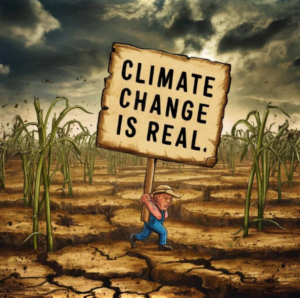
Another critical area of focus for the global agricultural sector will be the
need to mitigate and adapt to the impacts of climate change. As rising
temperatures, changing precipitation patterns, and the increased frequency of extreme weather events threaten the productivity and stability of food production systems around the world, farmers and policymakers will be called upon to develop and implement a range of climate-smart agricultural practices and technologies.
This may include the adoption of drought-resistant crop
varieties, the implementation of precision irrigation systems, the
enhancement of soil health and carbon sequestration, and the
diversification of farming enterprises to reduce risk and build resilience.
Additionally, the integration of traditional ecological knowledge and
Indigenous land management practices can offer valuable insights and
strategies for adapting to the challenges posed by climate change.
Research and Innovation:
Underpinning these efforts to transform the global agricultural
landscape will be the imperative to foster greater collaboration,
knowledge-sharing, and cross-pollination of ideas across regions,
sectors, and stakeholder groups. By breaking down the silos that have
often characterized the agricultural development landscape, the global
community can leverage the diverse strengths, experiences, and
perspectives of farmers, researchers, policymakers, and civil society to
develop more holistic and effective solutions.
This collaborative approach will be particularly crucial in the realm of agricultural
research and innovation, where the sharing of scientific knowledge, technologies, and best practices can accelerate the development of game-changing solutions that address the multifaceted challenges facing the world’s food systems.
Moreover, by fostering stronger connections between the producers and
consumers of food, the global agricultural sector can help to build a more
informed and engaged public that is empowered to make conscious
choices about the food they purchase and consume. This, in turn, can
drive further innovation and positive change within the agricultural
industry, as companies and producers respond to the evolving demands
and preferences of their customers.
Futuristic Approach:
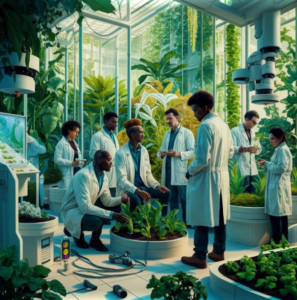
As we look towards the future, the role of global agriculture in shaping
a more sustainable, equitable, and resilient world cannot be overstated.
From ensuring food security and nutrition for all, to mitigating the
impacts of climate change, to preserving the rich biodiversity and cultural
heritage of our planet, the agricultural sector will be at the forefront of
the most pressing challenges and opportunities of our time.
By embracing a collaborative, inclusive, and innovative approach to
agricultural development, the global community can harness the power
of this vital industry to create a future where prosperity, environmental
stewardship, and social justice are not merely aspirations, but tangible
realities for people and communities across the world.
